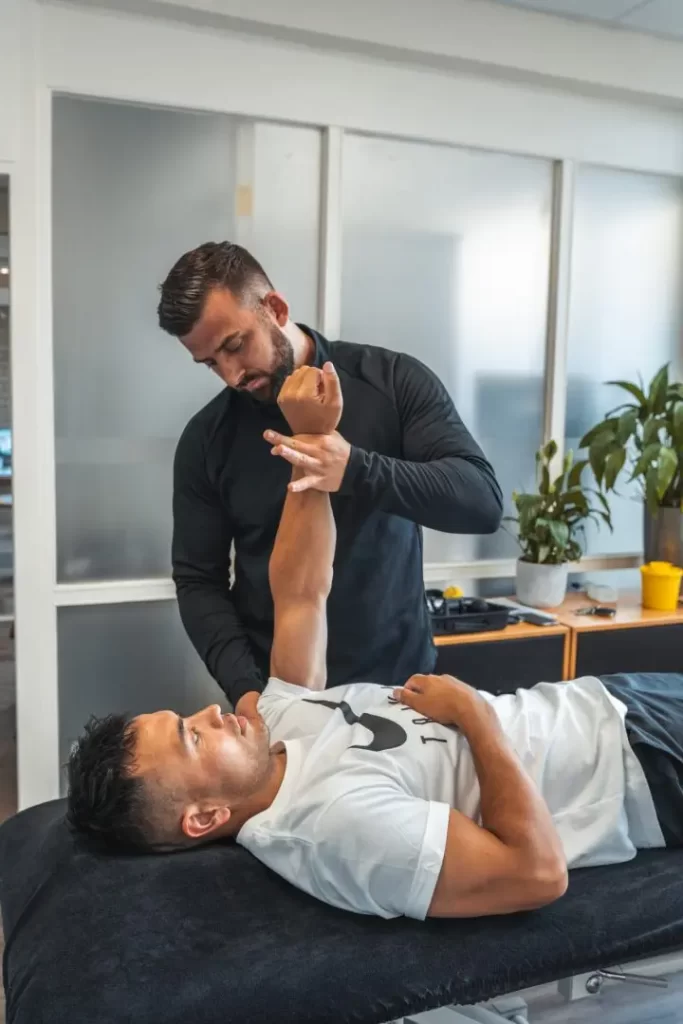Inversion trauma
In inversion trauma, you sprain the ankle, so to speak. This puts strain on the ligament talofibulare anterior. In people who do not seek physiotherapy help after going through an inversion trauma, there is 90% a chance that they will go through an inversion trauma again. This is because in these people, the ankle has never been strengthened after the inversion trauma and is therefore more susceptible to injury. When the ankle is sprained, swelling and possibly bruising may occur. Doing exercises to regain ankle strength and stability is hugely important to prevent new injuries. The physiotherapists at Fysiofitaal are able to help and guide you during rehabilitation from inversion trauma.

Cause
The ankle is made up of various bone structures, tendons and ligaments. In inversion trauma, you sprain the ankle, so to speak. This puts strain on the ligament talofibulare anterior. This ligament runs on the outside of the ankle. And runs from the malleolus (tubercle of your ankle) to a foot bone (the talus). We often see that inversion trauma occurs during sports or a walk in the woods. In the majority of people who have gone through inversion trauma and do not seek help, there is a 90% chance that they will go through inversion trauma again. This is because the ankle has never been strengthened after the inversion trauma and is therefore susceptible to injuries.
Complaints and symptoms
When spraining the ankle, swelling and possibly bruising may occur. Contrary to what you might expect, swelling and bruising says nothing about the severity of ligament damage. We often see pains and sometimes difficulty walking.
Diagnosis and examination
Inversion trauma is a diagnosis that the physiotherapists at Fysiofitaal can make for you. To check for inversion trauma, they will always start with a medical history. This is an interview through which the physiotherapist can gather information and thus arrive at a possible diagnosis. After the interview, the physiotherapist will carry out a number of tests to confirm whether this possible diagnosis is correct.
Treatments and prognosis
If you have just punctured your ankle, it is important to give it rest so that it can start recovering. For the first seven days, you are in what is called the inflammation phase. In this phase, the body starts clearing damaged tissue and starts making new tissue. In this phase, the RICE principle is followed. The RICE principle stands for; rest, ice, putting the leg up and possibly applying a pressure bandage. After a week, the body is in full recovery and exercises can be carefully started to strengthen the ankle again. Exercising to regain ankle strength and stability is hugely important to prevent new injuries. The physiotherapists at Fysiofitaal are able to help and guide you during rehabilitation from inversion trauma. Depending on the severity of the trauma, something can be said about the recovery of the ankle. Generally, the ankle recovers quickly and, if properly guided, you will be rid of your ankle injury within 6 weeks.
Making an appointment at FysioFitaal
We work from multiple locations in Tilburg, always close by for professional and accessible physiotherapy. Fill in the contact form and we will contact you soon. Together, we will work on your recovery!

